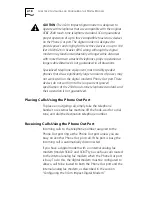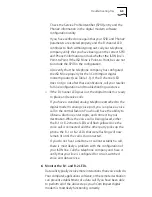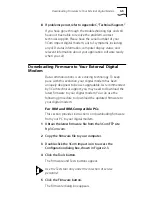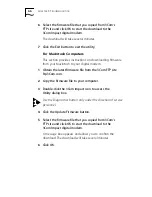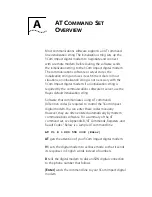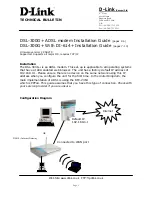
2-16
C
HAPTER
2: I
NSTALLING
AND
C
ONFIGURING
THE
D
IGITAL
M
ODEM
By default, the 3Com Impact digital modem dials the same
number for both Multilink PPP channels. If the destination to
which the digital modem is dialing to establish a second
Multilink PPP channel requires a different telephone number,
then this second telephone number is stored in register S81.
By default, this register is empty. It must be configured
before you establish each Multilink PPP call. If the
Multilink PPP destination is a single telephone number for
both channels, then be sure to clear register S81 by sending
the command
ATS81=<blank>
to the digital modem.
Some Multilink PPP implementations require the use of a
Multilink PPP option called the Multilink Endpoint Identifier.
This option is configured in registers S82 and S83.
Register S82 stores the Multilink Endpoint Identifier Class
value. Valid classes are listed in Appendix B, “AT Commands,
Registers, and Result Codes.” Register S83 stores the actual
Multilink Endpoint Identifier. Note that this option is not
required in most cases, so these registers typically do not
have to be changed. If the Multilink Endpoint Identifier is
required, these values will be provided by your system
administrator or Internet service provider.
When dynamic bandwidth allocation is enabled (by default),
you can place a voice call from a device that is attached to
the Phone Out port while a Multilink PPP call is active. When
you lift the telephone handset to place a voice call, the
digital modem automatically removes one of the Multilink
PPP connections and uses it for the voice call. Once the voice
call ends, the digital modem automatically reestablishes that
channel for Multilink PPP operation.
There may be cost implications due to the use of two
B channels for Multilink PPP. Check with your service
providers, such as the telephone company, Internet access
provider, or on-line service provider.

















